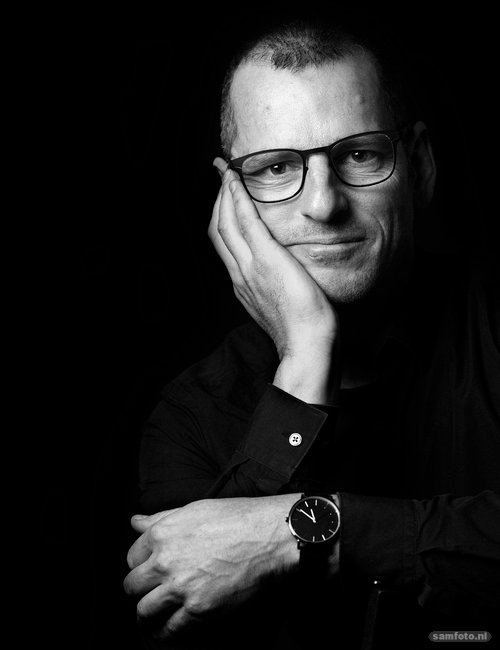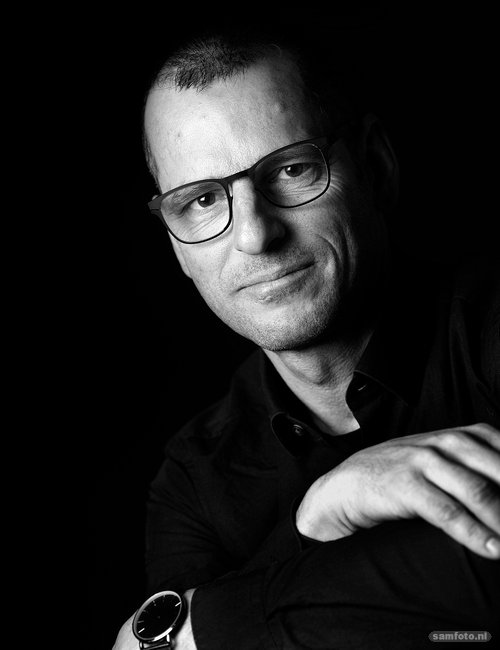‘It’s madness not to be working on energy-neutral buildings’
In the Netherlands, Amsterdam is taking the lead when it comes to improving urban sustainability. The city aims to be CO2-neutral by 2040. Andy van den Dobbelsteen heads up the research group that is charting the course for this mammoth task.
It's a city packed full of draughty 1950s housing and lopsided 17th-century canal-side mansions with old-fashioned glazing. Has the capital city actually lost its marbles? If you take a walk around Amsterdam it’s difficult to imagine that the city is nurturing the ambition of becoming CO2-neutral.
But that really is a target for 2040. Other cities are set to follow suit ten years later. Amsterdam is setting the bar high. But it is achievable, according to Andy van den Dobbelsteen, Professor of Climate Design and Sustainability (Architecture and the Built Environment). He heads up the research group that is charting out the course for the city to take. The research is part of the European project City-zen.
There are bound to be some battles ahead. Not on the barricades, but on the drawing boards. Where will the heating networks be and what type will be installed? Heated discussions about these issues are already raging between the city, energy companies and residents. ‘Here in this neighbourhood, Zeeburgereiland, energy company Nuon wants to install a high-temperature heating system’, says Van der Dobbelsteen, who pulls up a map of Amsterdam on his laptop. ‘But the residents are fiercely opposed. They want to be connected to a system for lower temperatures. This can ultimately be supplied by a range of different sustainable sources.’
Heating networks
Heating networks will be crucial for the plan’s success. Hot water flows through these pipes, which will ultimately heat most of the houses and replace the gas currently used by the majority of households. The water flowing through the current heating networks is between 70 and 90 degrees and originates from the Nuon gas plants or from waste incineration. In the future, the heat will need to come from various different sources, such as geothermal heat and solar collectors. The temperature will also be lower in most cases, at around 40 to 60 degrees Celsius. This means replacing the heating systems and expanding the system of networks.

Foto Sam Rentmeester
Highlighted parts of the map show which areas can easily be connected to low-temperature heating networks. Large parts of the city are already highlighted; the Zuidas, Amsterdam-Zuidoost, the neighbourhoods alongside the IJ, including the islands Java Eiland, Borneo Eiland and IJburg. Noticeably, the city centre has been left untouched.
So is the city centre not participating in efforts to improve sustainability?
‘The heating networks will gradually be brought inwards from the outer neighbourhoods. Whether they will completely cover the old city centre remains unclear. It’s only possible to heat houses with low-temperature water if they’re properly insulated. Houses that are centuries old are difficult to insulate. Monumentenzorg (the Department for the Preservation and Restoration of Monuments and Sites) insists on window frames with bubbled glass that looks like it dates from the 17th century. There is a version of double glazing that looks like it, but Monumentenzorg says it’s not good enough. This is pure obstruction.’

Foto: Sam Rentmeester
Monumentenzorg simply wants it to continue to have a 17th-century appearance. Don’t they have a point?
‘We have a street scene filled with cars, rubbish bins, bicycles and houseboats that have nothing to do with the 17th century. But you’re not allowed to replace a window. That’s just nuts in my view. We’re also not permitted to install roof tiles fitted with solar cells on visible roofs. They glisten slightly more than the old-fashioned tiles. Together with solar cell expert Prof. Miro Zeman (EEMCS) and his research group in the SolarUrbanprogramme, we are now attempting to make products that meet the requirements, such as roof tiles that are slightly less shiny.’
You’re not giving up on the city centre.
‘No, my suggestion would be to install heating networks for high temperature there.’
But that would mean that the centre will never give up gas because the hot water will still need to be heated by a gas plant?
‘No, most of the high-temperature heat should come from geothermal energy, possibly supplemented in the winter by means of co-firing. In the future, there will always be some gas still. But it will be green gas, such as biogas or synthetic methane, produced by incinerating biomass or using surplus power in the summer.
Another alternative is simply to leave the gas pipes in place and gradually fill them with synthetic methane, biogas or hydrogen. It’s important that we set our priorities properly, because the little bit of gas that we still have in the future will be sorely needed for metal processing, the plastics industry and freight transport. It’s a waste to consume gas for houses. It’s a very high-quality fuel. Gas combustion takes place at a temperature of 1,200 to 1,500 degrees. Using that to heat water to 60 degrees is a waste.’
You are not ruling out the mass demolition of buildings. That’s strange. I thought you were against it?
‘In our study, we started by looking at where we can save energy. We estimate that Amsterdam can reduce its heating demand by a third by means of insulation and the demolition of the very worst buildings. In principle, I’m against demolition. Sixty percent of all the environmental and carbon burden of an office building is in the load-bearing structure. If you don‘t demolish the building, but empty and strip it, you’re conserving that sixty percent. But some buildings are simply no longer fit for purpose. For example, the ceiling height may be too low by modern standards. Some housing dating from the rapid post-war reconstruction period is also in a poor condition. There are also buildings in awkward positions, such as next motorways or in locations where urban revival is envisaged and where they are preventing it. Sometimes you have to bite the bullet and not be afraid of demolishing.’
Do you also oppose the demolition of robust office buildings with a good load-bearing structure and good ceiling height?
‘No. I simply consider it to be the destruction of capital. The problem is that we don’t have to pay for any residual value that remains in the materials. Currently, it makes no difference if you demolish a building after ten years or 200. In my thesis (2004), I put forward the idea of linking every building to a type of environmental mortgage that can only be written off after 75 or 100 years. Seventy-five years roughly amounts to a human lifetime. All of us can imagine a building lasting for a human lifetime. It’s also realistic as there are very few structures that need to be demolished before that time for technical reasons.’
Your plan also envisages the construction of solar parks, wind turbines and the planting of woodland outside the city to compensate for residual CO2. And forty percent renewable energy will need to be bought in the region. You also assume that all new construction will be self-sustaining, i.e. CO2-neutral, from now on. Is that not rather too optimistic?
‘Why? It’s perfectly possible. Many builders are already making energy-neutral or even energy-supplying homes as standard.’

Foto Sam Rentmeester
So where are these homes? Not in Amsterdam.
‘A lot are being built, mainly in the north and east of the country. In the Randstad things are more difficult, it’s true. Project developers have adopted a wait-and-see approach. If it’s not a statutory obligation, they don’t do it. It does make houses slightly more expensive. But the plus side is that you have no energy bills. It’s madness not to be working on energy-neutral buildings. If we’re not careful, today’s new buildings could be the problem of the future.’
Can the lessons learned from your study also be used for other cities?
‘Partially. The situation is different everywhere. Amsterdam has everything: industry, post-war neighbourhoods, a historic centre and redevelopment projects. Utrecht has no industry. Rotterdam is even stranger. That city has hardly any historic city centre. It also has a port that consumes huge amounts of energy. Making that energy-neutral will be quite a challenge. The Hague has hardly any surface water, but is located on the coast, which opens up all kinds of opportunities. Every city will need to make its own analyses and plans.’
Which city is most like Amsterdam?
‘… Well, it’s slightly smaller, but in essence, Delft is probably the closest.’
More information
Project CityZen Programma SolarUrban
CV
Prof. Andy van den Dobbelsteen is Professor of Climate Design and Sustainability at Architecture and the Built Environment and head of the department of Architectural Engineering and Technology. His chair plays an important role in the European City-zen research project that aims to create energy-neutral cities. On King’s Day 2018, he was made a Knight of the Order of the Netherlands Lion in recognition of his work. In March this year he received the Academic Society Award of KIVI, the Royal Institute of Engineers. Van den Dobbelsteen also has literary ambitions. Last year, he published a thriller, Campingsmoking about Dutch people at a French campsite.
